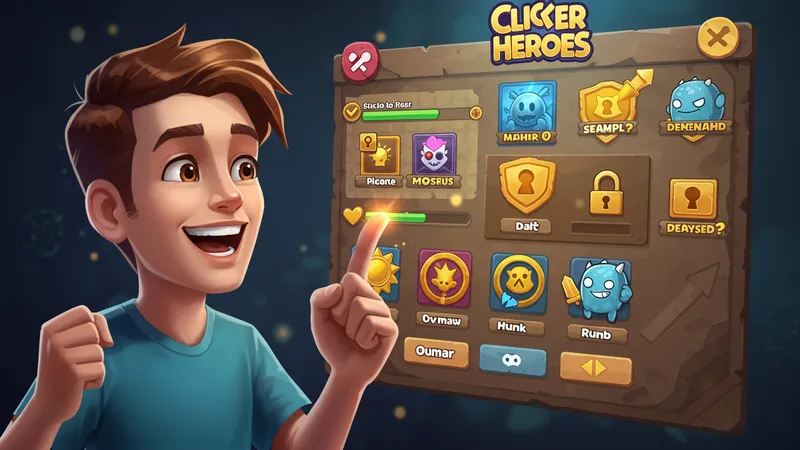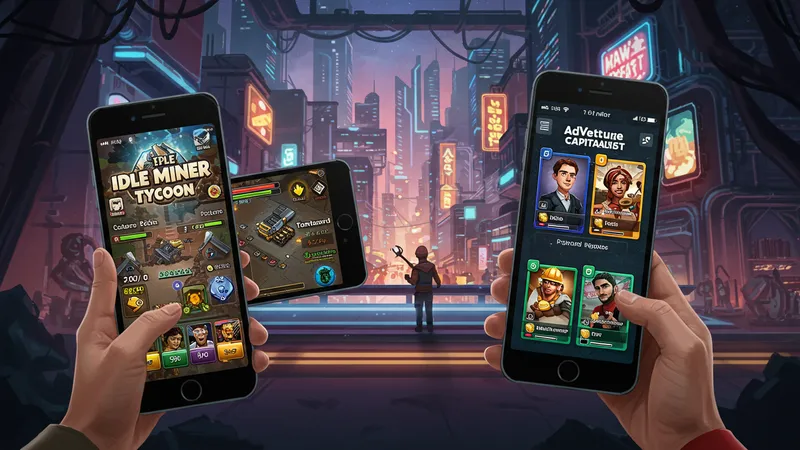

Imagine a type of game that entertains without demanding your constant attention. Idle games, often called incremental games, offer an experience where progress continues whether you actively play or not. These clever titles use simple mechanics, minimal controls, and rewarding feedback loops, making them an ideal choice for people seeking quick bursts of enjoyment amid a busy day—whether you're on a coffee break, commuting, or waiting in line.
Idle games work by allowing players to set up systems or upgrades and then “let the game play itself.” You’ll witness satisfying progress as numbers climb, rewards accrue, and new features unlock over time. This unique format means you don’t need gaming experience or extended free time. Instead, you can dip in and out without losing track of your achievements, making idle games a perfect solution for short entertainment sessions using just your phone or computer.

Idle games are often popular among those with packed schedules or anyone wanting to avoid long learning curves. For instance, AdVenture Capitalist asks you to build a business empire by automating investments. As the game works for you in the background, you return later to collect earnings and buy upgrades in moments. It’s a satisfying way of seeing progress with minimal input, especially if you only have a few spare minutes.
Unlike action-heavy games that require full engagement and precise timing, idle games excel at providing entertainment that slips easily into your lifestyle. With titles such as Clicker Heroes, you can click your way through battles and creatures, then let the automated progress take over. This lets users relax and see their stats grow, providing gratification without constant micromanagement.
The genre’s popularity can be tied to its accessibility. Many idle games are free to start, with optional purchases for cosmetic or progress-boosting items. Platforms like Android, iOS, and web browsers ensure virtually anyone can give idle games a try. As a result, their appeal cuts across all age groups and gaming experience levels.
For a practical perspective, busy professionals or multitaskers in the United States often turn to titles like Idle Miner Tycoon. It’s easy to step away for a conference call or focus on real-life tasks, knowing you’ll return to see your mines running profitably on autopilot. The combination of automation, constant rewards, and stress-free play makes idle games uniquely suited for quick entertainment needs.
All of this sets the stage for a deeper look at why idle games have captured the interest of so many. What are the psychological hooks and gameplay secrets that keep people coming back, especially in a fast-paced world? The deeper details reveal even more valuable insights ahead…
What truly distinguishes idle games when it comes to fast entertainment is their ability to condense complex gameplay into simple, rewarding loops. Unlike genres that require training or practice, idle games prioritize ease of entry. Players can start within seconds, make meaningful choices, and see immediate progress. “Set and forget” elements allow play sessions to fit tightly into gaps throughout the day, which is a key expectation for many users in the United States.

Another defining feature is asynchronous progress, where the game continues to evolve in your absence. Whether it’s gaining resources, unlocking new achievements, or expanding virtual businesses, idle games offer a sense of fulfillment after every return. This constant sense of advancement, without the need for marathon gaming sessions, directly caters to the quick-entertainment market.
Reward systems in idle games are engineered to encourage short, rewarding visits. Developers use notification prompts or highlighted milestones to entice players back at the right moments, driving ongoing engagement. Titles like AdVenture Capitalist and Clicker Heroes employ these techniques to foster a predictable and enjoyable feedback loop, enhancing satisfaction with minimal effort.
The design philosophy behind these games often centers on low friction. There’s little risk of being stuck, failing, or losing progress—qualities that align perfectly with casual engagement. As a result, idle games continue to thrive among people who want regular entertainment without the pressure of competition or repeated restarting.
Accessibility has played a pivotal role in the widespread success of idle games in the United States. Most titles are available on multiple platforms, from browser-based apps to dedicated mobile versions, often with seamless cloud saving. This allows users to jump in from work, home, or during a commute—the classic “anytime, anywhere” model that supports the needs of busy Americans.

Mobile-first design is another hallmark of the genre, especially for games like Idle Miner Tycoon. Touch controls, intuitive menus, and bite-sized missions ensure that users with even a brief moment to spare can accomplish something meaningful. The prevalence of smartphones in the U.S. has made idle games the default choice for commuters and people waiting in public spaces.
In comparison to traditional titles requiring ongoing attention or multiplayer sync, idle games fit better into fragmented schedules. The pressure-free interface and forgiving progress system relieve stress and encourage repeated engagement, which aligns with the lifestyle patterns in the United States, where many people juggle multiple responsibilities daily.
Developers have also adapted to disability needs, often implementing streamlined navigation, minimal text, and high-contrast visuals. This inclusive approach broadens the audience and ensures that the promise of quick entertainment can be delivered to as many users as possible, regardless of gaming experience or physical limitations.
Idle games employ powerful psychological triggers that keep users returning for short, satisfying play sessions. The most notable is the progression loop: seeing numerical growth, unlocking achievements, and building virtual empires reinforces positive behavior, rewarding players even in the absence of direct action. This loop is especially effective in fast-paced societies like the United States, where instant gratification is often highly valued.

Games such as Clicker Heroes present frequent small wins—defeating monsters, earning upgrades, or advancing levels—to build anticipation and encourage repeat visits. The regular dopamine hits from progress stimulate user engagement, even if sessions only last a couple of minutes, making the games highly effective for brief stints of entertainment.
Status symbols, leaderboards, and milestone rewards provide extra incentives for U.S. players to re-engage and share accomplishments with friends. Even without a competitive focus, the sense of public or personal achievement enhances replayability and satisfaction. Many idle games also provide social features without requiring the time commitment of live multiplayer play.
By distilling the essence of advancement into small, manageable experiences, idle games have tapped into the psychology behind why quick entertainment can feel so fulfilling. The structure keeps users motivated to check back in, ensuring that each play session, no matter how short, yields tangible and satisfying results.
The popularity of idle games for quick entertainment continues to grow, especially as Americans seek activities that fit into small time slots. Developers have noticed this trend and now experiment with hybrid features—combining idle mechanics with resource management or interactive storytelling. Games like AdVenture Capitalist add narrative layers and varied upgrade paths, pushing the genre’s boundaries.

One notable trend is the gamification of real-life concepts. Idle Miner Tycoon’s mining simulation mirrors modern interests in entrepreneurship and passive income, resonating with U.S. audiences looking to simulate rewarding progress. Such games now feature events, limited-time challenges, and customization options, keeping the gameplay experience fresh for returning users.
It’s clear that as technology evolves, idle games will continue to offer new ways for people to relax and find enjoyment quickly. Mobile technology, cloud gaming services, and improved internet access mean idle games will reach even larger audiences. Accessibility remains a trend, with developers incorporating voice controls and more refined user interfaces for speed and convenience.
As the appetite for quick, engaging activities rises, idle games stand ready to provide exactly what players want: entertainment that adapts to the user’s needs, not the other way around. The genre’s flexibility ensures its relevance for years to come, cementing its place as a mainstay of fast, effortless amusement for millions.